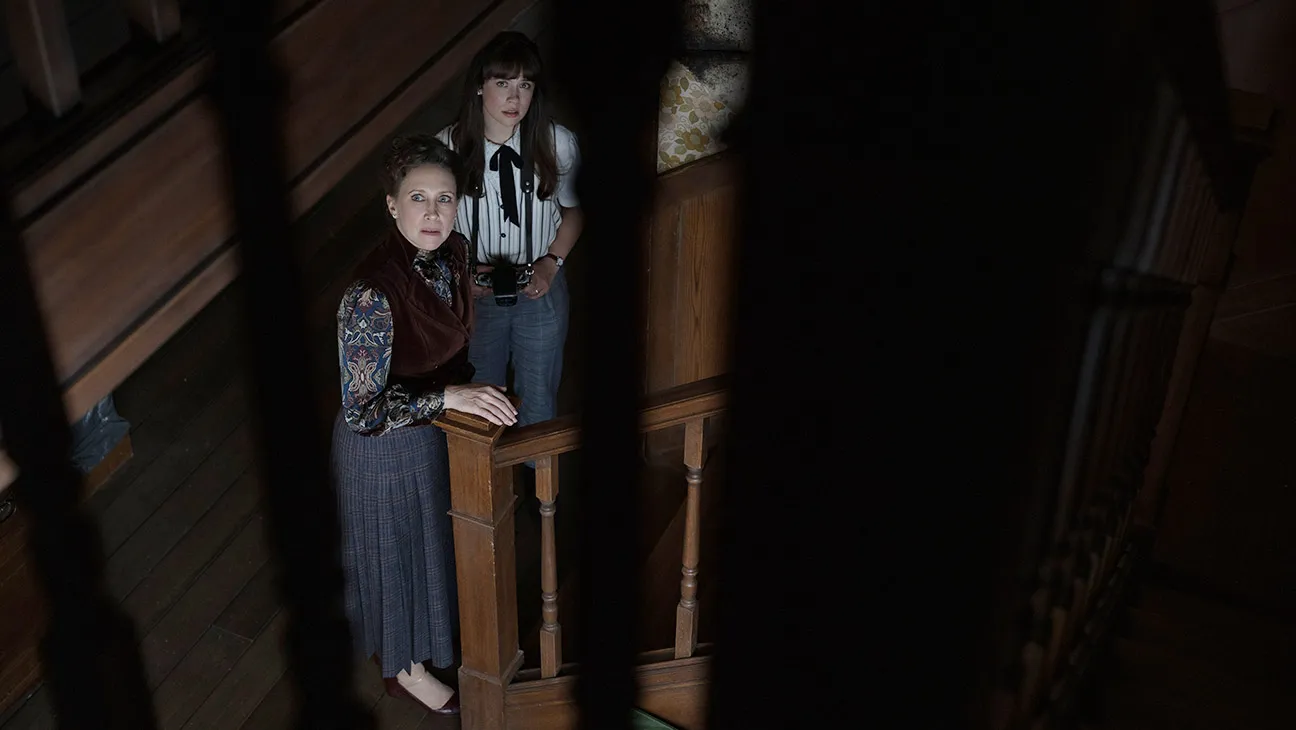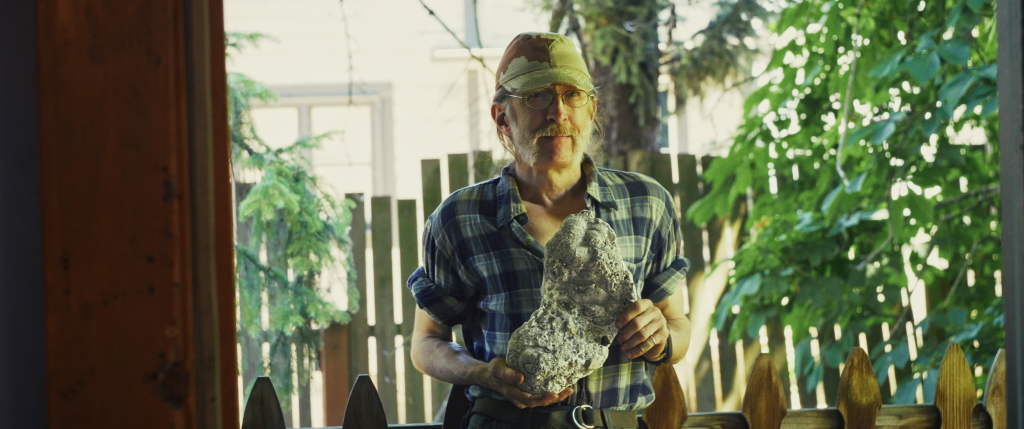Reviews
‘The Conjuring: Last Rites’ Review: Back To Basics, But Is Basic Enough?

The Conjuring: Last Rites is a film that feels anxious. Anxious about sending off its characters, anxious about cutting things too short, and anxious about taking any risks. Ultimately, it is what it needs to be. It’s a back-to-basics entry in the series, designed from head to toe to give the Warrens the kind of peculiarly pleasant poltergeist filled sendoff you’d expect. Conjuring fans will be pleased with how it evokes the first two films and how much love it shows its main characters. But for those with little emotional attachment to the franchise and those who find little appeal in callbacks, the back-to-basics approach won’t do much.
The Conjuring Is A Billion Dollar Beast That Must Be Fed
Maybe it’s a righteous anxiety. If the Nightmare on Elm Street series was what made New Line Cinema “The House That Freddy Built”, then it’s safe to say the Conjuring franchise made New Line Cinema “The House That James Wan Kept In Order”. As of this year, The Conjuring’s cinematic universe is a multi-billion-dollar property and the most financially reliable one in all of horror history (at the very least the highest grossing). It demands repeating what you’ve done before, because that is what has made New Line and Atomic Monster money hand over fist for more than a decade now.
But what makes money and what makes a film great have never really been the same, have they?
This leads to a story and plot devices and performances you’ve seen before: a demon does bad things to a family of good people, this time in suburban Pennsylvania, as the film attempts to depict the Smurl haunting of 1986. Ed and Lorraine Warren show up to help them, once again played by Patrick Wilson and Vera Farmiga. They are terrorized by haunted children’s toys, monsters lurking in mirrors and shadows, and it all culminates in a big exorcism. The primary difference this time around is that the Warrens themselves are victims as well, as their daughter, Judy (Mia Tomlinson), is being targeted by a malicious entity simultaneously, one that has had her on its list since the day she was born.
The (Fictional) Warrens Final Ride Tugs At The Heartstrings
Despite any grievances one might have with the real-life Warrens, I have always been of the opinion that the fictional Warrens were the least interesting part of the series. An insistence on putting Ed and Lorraine front and center in the second and third films seemed to overlook that the majority of the charm of the first film was in the time we spent with the Perron family. Their slow burn suffering through the Infestation and Oppression steps of the Warren’s iconic three-stage demon map, their struggle against the unknown, that was what made the first film iconic and atmospheric. Some of that is recreated here with the Smurls and their realistic family conflict in the face of the supernatural. But make no mistake, this film belongs to the Warrens.
And this entry, surprising as it may be, made me actually enjoy watching the Warrens and seeing their relationship with their now grown daughter Judy play out. Tomlinson delivers on her role, bringing life to a character who was effectively a latchkey kid, coming home every day to an arsenal of the most wildly evil artifacts on earth. Here, she has developed psychic abilities similar to her mother, leading to a struggle to suppress them and live a normal life. Her relationship with her parents is believable, and she plays especially well opposite Farmiga.
Heartwarming Climax with a Sentimental Edge
Our fourth expedition with the Warrens is undeniably schmaltzy in highlighting this, but that sentimentality it smacks you with intertwines with the plot nicely. It even takes the usual bombastic climax you’ve come to anticipate from modern exorcism films and actually tries to say something instead of just knocking you in the head repeatedly with eerie visuals and loud noises. The big confrontation, which evolves from the walls of a house exploding and people being thrown around by infernal telekinesis, ultimately becomes something heartwarming and on theme.
The Conjuring: Last Rites Is A House Tonally Divided
Now despite the sweetness in that regard, the film cannot be saved from its more glaring flaws by the power of family. Last Rites comes in at a slightly bloated 2 hours and 15 minutes runtime due to the cutting back and forth between its a-plot and its b-plot. The fact the actual Smurl haunting feels like a B-plot at all until the final third of the film is a symptom of a much bigger disconnect in the script.
Last Rites is a scare-a-minute fare on one side, chock full of jump scares and some actually very effective set pieces surrounding its paranormal antagonists (see: one of the Smurl daughters scouring a tape to catch a glimpse of the entity attacking her family, and the surprising death of a series regular). But its other half is too whimsical to bridge the gap. It’s hard to get in and out of the mood to be scared by malevolent spirits when you have things like a table tennis montage between Ed and Judy’s new boyfriend set to Bowie’s “Let’s Dance” jerking you back into lightheartedness.
What results is a film that, while entertaining as the closer to the series in abstract, ultimately fails to reach the practical levels of dread the original or its sequel did. The Conjuring still manages to give me consistent chills with its scares all these years later, but Last Rites only manages to land hits a little more than half the time. It is a house tonally divided, and it’s a miracle that it doesn’t totally collapse by the end despite that division.
Michael Chaves Directing Course Corrects For The Finale
Returning director Michael Chaves, who helmed The Devil Made Me Do It and The Nun II, at the very least revitalizes things from the aesthetic downgrade we got in the last film. He doesn’t bring the heat he was bringing in The Nun II, but he does recover from the misstep that was the third movies’ cartoonish presentation.
The movement of the camera and the visuals provided here are the course correction the series really needed for its final run. It feels reductive to say he’s a good understudy for James Wan, given he’s directed more Conjuring films than Wan has at this point, but it’s hard not to make the comparison when so much of this film calls back to that original that started it all.
The Conjuring: Last Rites closes the book on a very large chapter of horror history, along with serving a side of the warm and fuzzies for those particularly invested in the characters Wilson and Farmiga made famous. But it’s far from the best the franchise has to offer, suffering from tonal whiplash and an inconsistent ability to generate scares. While I’m glad for the horror fans that will enjoy it, I have a nagging feeling that “The Case That Ended It All” won’t stand the test of time the way its predecessors have.
Reviews
‘Frankenstein’ Review: Guillermo Del Toro Is Off to the Races

Those expecting Guillermo Del Toro’s Frankenstein to be similar to the book, or to any other adaptation, are in for something else. A longtime enjoyer of the creature’s story, Del Toro instead draws from many places: the novel, James Whale’s culturally defining 1931 film, the Kenneth Branagh version, there are even hints from Terence Fisher’s Curse of Frankenstein, and if the set design and costuming are to be believed, there are trace elements of the National Theatre production too.
The formulation to breathe life into this amalgam is a sort of storm cloud of cultural memory and personal desire for Del Toro. This is about crafting his Frankenstein: the one he wanted to see since he was young, the vision he wanted to stitch together. What results is an experience that is more colorful and kinetic and well-loved by its creator than any Frankenstein we’ve had yet, but what it leaves behind is much of its gothic heart. Quiet darkness, looming dread, poetry, and romance are set aside as what has been sold as “the definitive retelling” goes off to the races. It’s a fast-paced ride through a world of mad science, and you’re on it.
Victor Frankenstein’s Ambition and Tragedy
A tale as old as time, with some changes: the morbid talents and untamed hubris of Victor Frankenstein (Oscar Isaac) guide him to challenge death itself. Spurred by a wealthy investor named Henrich Harlander, and a desire for Harlander’s niece Elizabeth (Mia Goth), Victor uses dead flesh and voltaic vigor to bring a creature to life. His attempts to rear it, however, go horribly wrong, setting the two on a bloody collision course as the definitions of man and monster become blurred.
Guillermo Del Toro’s Frankenstein is more Hellboy in its presentation than it is Crimson Peak; it’s honestly more similar to Coppola’s Dracula than either of them. The film is barely done with its opening when it starts with a loud sequence of the monster attacking Walton’s ship on the ice. Flinging crew members about and walking against volleys of gunfire, he is a monstrosity by no other name. The Creature (Jacob Elordi) cries out in guttural screams, part animal and part man, as it calls for its creator to be returned to him. While visually impressive (and it remains visually impressive throughout, believe me), this appropriately bombastic hook foreshadows a problem with tone and tempo.
A Monster That Moves Too Fast
The pace overall is far too fast for its first half, even with its heavy two-and-a-half-hour runtime. It’s also a far cry from the brooding nature the story usually takes. A scene where Victor demonstrates rudimentary reanimation to his peers and a council of judges is rapid, where it should be agonizingly slow. There’s horror and an instability in Victor to be emphasized in that moment, but the grotesque sight is an oddly triumphant one instead. Most do not revile his experiments; in fact he’s taken quite seriously.
Many scenes like this create a tonal problem that makes Victor’s tale lean more toward melodrama than toward philosophical or emotional aspects; he is blatantly wild and free, in a way that is respected rather than pitied. There are opportunities to stop, breathe in the Victorian roses and the smell of death, to get really dour, but it’s neglected until the film’s second half.
Isaac’s and Goth’s performances are overwrought at points, feeling more like pantomimes of Byronic characters. I’m not entirely convinced it has more to do with them than with the script they’re given. Like Victor working with the parts of inmates and dead soldiers, even the best of actors with the best of on-screen chemistry are forced to make do. The dialogue has incredibly high highs (especially in its final moments), but when it has lows, how low they are; a character outright stating that “Victor is the real monster” adage to his face was an ocean floor piece of writing if there ever was one.
Isaac, Goth, and Elordi Bring Life to the Dead
Jacob Elordi’s work here, however, is blameless. Though Elordi’s physical performance as the creature will surely win praise, his time speaking is the true highlight. It’s almost certainly a definitive portrayal of the character; his voice for Victor’s creation is haunted with scorn and solitude, the same way his flesh is haunted by the marks of his creator’s handiwork. It agonizes me to see so little of the books’ most iconic lines used wholesale here, because they would be absolutely perfect coming from Elordi. Still, he has incredible chemistry with both Isaac and Goth, and for as brief as their time together is, he radiates pure force.
Frankenstein Is a Masterclass in Mise-En-Scène
Despite its pacing and tone issues, one can’t help but appreciate the truly masterful craftsmanship Del Toro has managed to pack into the screen. Every millimeter of the sets is carved to specification, filled with personality through to the shadows. Every piece of brick, hint of frost, stain of blood, and curve of the vine is painstakingly and surgically placed to create one of the most wonderful and spellbinding sets you’ve seen—and then it keeps presenting you with new environments like that, over, and over.
At the very least, Del Toro’s Frankenstein is a masterpiece of mise-en-scène down to the minutest of details, and that makes it endlessly rewatchable for aesthetic purposes. This isn’t even getting into the effervescent lighting, or how returning collaborator Kate Hawley has outdone herself again with the costuming. Guillermo Del Toro tackling the king of gothic horror stories, a story written by the mother of all science fiction, inevitably set a high bar for him to clear. And while it’s not a pitch perfect rendering of Mary Shelley’s slow moving and Shakespearean epistolary, it is still one of the best-looking movies you will see all year.
Perhaps for us, it’s at the cost of adapting the straightforward, dark story we know into something more operatic. It sings the tale like a soprano rather than reciting it like humble prose, and it doesn’t always sing well. But for Del Toro, the epic scale and voice of this adaptation is the wage expected for making the movie he’s always dreamed of. Even with its problems, it’s well worth it to see a visionary director at work on a story they love.
Reviews
‘The Siege of Ape Canyon’ Review: Bigfoot Comes Home

In my home, films like Night of the Demon and Abominable are played on repeat; Stan Gordon is king. One of my favorite stories surrounding Bigfoot and Ufology is the Bigfoot/UFO double flap of 1973, which Stan Gordon has an incredible in-depth book on. The Patterson–Gimlin film couldn’t hold a flame to Stan Gordon’s dive into one of my home state’s most chronicled supernatural time periods. But as much as I love the Bigfoot topic, I’m not ashamed to say I don’t know half of the stories surrounding that big hairy beast. And one topic that I’m not ashamed to say I haven’t heard of is The Siege of Ape Canyon.
The Harrowing Events of Ape Canyon
Washington State, 1924. A group of miners (originally consisting of Marion Smith, Leroy P. Smith, Fred Beck, John Peterson, August Johannson, and Mac Rhodes) was on a quest to claim a potential gold mine. Literally. The miners would eventually set up camp on the east slope of Mount Saint Helens. Little did they know their temporary shelter would be the start of a multi-day barrage of attacks from what they and researchers believed to be Bigfoot. What transpired in those days would turn out to be one of the most highly criticized pieces of American lore, nearly lost to time and history…nearly.
I need to set the record straight on a few things before we get started. One, I don’t typically like watching documentaries. Two, I believe in Bigfoot. Three, this documentary made me cry.

Image courtesy of Justin Cook Public Relations.
Reviving a Forgotten Bigfoot Legend in The Siege of Ape Canyon
Documentarian Eli Watson sets out to tell one of the most prolific Bigfoot stories of all time (for those who are deep in Bigfoot mythology). It’s noted fairly early in the film that this story is told often and is well known in the Washington area. So then, how do people outside of the incident location know so little about it? I’ve read at least 15 books on and about Bigfoot, and I’ve never once heard this story. This isn’t a Stan-Gordon-reported story about someone sitting on the john and seeing a pair of red eyes outside of their bathroom window. The story around Ape Canyon has a deeper spiritual meaning that goes beyond a few sightings here and there.
Watson’s documentary, though, isn’t just about Bigfoot or unearthing the story of Ape Canyon. Ape Canyon nearly became nothing more than a tall tale that elders would share around a campfire to keep the younglings out of the woods at 2 AM. If it weren’t for Mark Myrsell, that’s exactly what would have happened. The Siege of Ape Canyon spends half its time unpacking the story of Fred Beck and his prospecting crew, and the other half tells a truly inspiring tale of unbridled passion, friendship, and love.
Mark Myrsell’s Relentless Pursuit: Friendship, Truth, and Tears
Mark Myrsell’s undying passion for everything outdoors inevitably led to bringing one of Bigfoot’s craziest stories to light. His devotion to the truth vindicated many people who were (probably) labeled kooks and crazies. Throughout Myrsell’s endless search for the truth, he made lifelong friends along the way. What brought me to tears throughout The Siege of Ape Canyon is Watson’s insistence on showing the human side of Myrsell and his friends. They’re not in this to make millions or bag a Bigfoot corpse; they just want to know the truth. And that’s what they find.
The Siege of Ape Canyon is a documentary that will open your eyes to a wildly mystical story you may not have heard of. And it does it pretty damn well. Whereas many documentaries feel the need to talk down to the viewer just to educate them, Watson’s documentary takes you along for the ride. It doesn’t ask you to believe or not believe in Bigfoot. It allows you to make your own decisions and provides the evidence it needs to. If you’ve ever had a passing interest in the topic of Bigfoot, or if you think you’re the next Stan Gordon, I highly recommend watching The Siege of Ape Canyon.
The Siege of Ape Canyon stomps its way onto digital platforms on November 11. Give yourself a little post-Halloween treat and check it out!






















